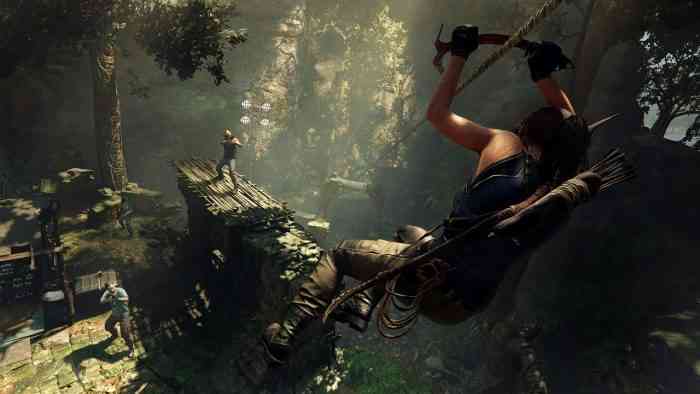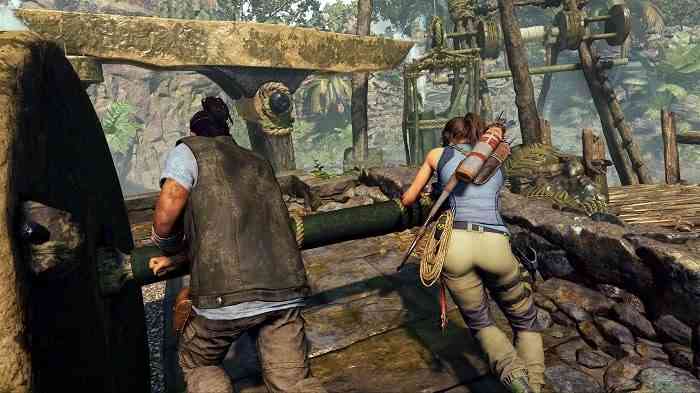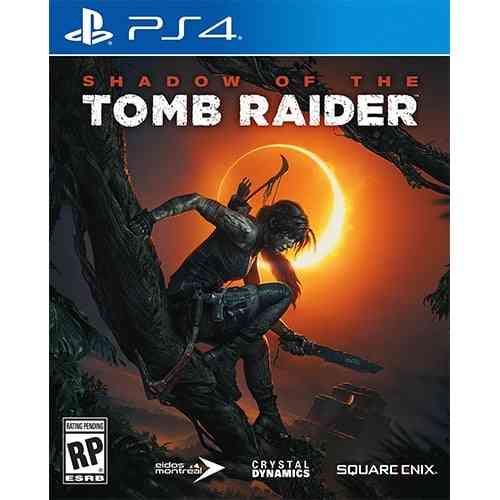Shadow of the Tomb Raider Hands-on: Eidos Montreal Builds on Crystal Dynamics’ Formula
Recently, Square Enix invited me and a group of other games journalists to go hands-on with Shadow of the Tomb Raider. We’re three games into a franchise that seemingly spares little wiggle room for innovation. We’ve had tombs, cinematic action, stealth, and Lara; I thus believed the next game would require a keen eye to spot improvements. Fortunately, I didn’t need a microscope to observe great story, combat, and traversal. From what I’ve played, Eidos Montreal has learned from Crystal Dynamics and improved upon all three aspects.
Gripping & Intense Story
Shadow of the Tomb Raider’s first ever demo makes Lara responsible for cataclysmic events in Mexico, which in turn solicits her inner turmoil. To hit the point home, Eidos created a real-time sequence where a child is dangling from a window, and you, as Lara, must rush over to him. It was one of those desperate circumstances in which I nearly broke my thumb stick. Afterward, the fallout between Lara and loyal friend Jonah makes her reevaluate her priorities.
Lara acknowledges the consequences of Mexico in demo number 2, which is the subject of this preview. Shadow’s marketing initially made me believe Lara would be one-note and a little callous. The 2nd demo, set in Peru, convinced me that she’s emotionally dynamic. Though she walks the path of a stone-cold hunter, there were gameplay moments where I saw the fear and empathy of 2013’s Lara spill through. Contrary to what I said in my first hands-on preview, she’s more than a Rambo with a Ph.D. in Archaeology. She expresses remorse in her actions to Jonah, who’s along for the ride and represents a counter-weight to the killer ambition that has seemingly grabbed hold of her. More than that, Jonah serves as a moral compass, which leads me to believe he’s pivotal to Lara’s arc in this installment. Like Alfred to Bruce Wayne or Sully to Nathan Drake, his presence as a friend solicits the more personable side of Lara Croft. For long-time fans of her character, this will serve a breath of relief.

Satisfying Combat
Tomb Raider has always been an action game, a fact that would hold no water without its solid combat. Eidos Montreal has doubled down on this pillar, more so where stealth is concerned. Traditionally, battles against every rag-tag group of mercenaries (or Trinity) has been a test of Lara’s ingenuity vs their brawn. In most cases, players have been limited to skulking in shadows or beating against the wall with bullets, arrows, or explosives. You can now shift between the two.
Shadow’s best new combat feature is wall-hugging. Simple it may be, it offers a new sense of liberty compared to previous games. Whereas enemy detection typically locked you into a fight of attrition, the player can now raise hell then disappear at will. If you kill a few enemies and alert an entire camp, vanishing is as easy as pressing your thumbstick in the direction of a wall. A supplementary mechanic for this is self-camouflage; close proximity to a puddle lets Lara bathe in mud, and this makes her practically invisible. Aside from fulfilling some Rambo fantasies, this also enhances the immersion factor.
Mud skin will disappear, however, if you go for a swim. Why dive into water? Because the return of swimming in Tomb Raider has a twofold benefit: it offers more ways to explore and new ways to attack. Where combat is concerned, diving underwater helps avoid detection. Better yet, it facilitates underwater executions. Sure, I can speak of the brutality behind Lara’s drowning an unsuspecting mercenary, but that would distract from the bottom line: underwater executions are fun. It’s another option for the player, and Eidos understands the importance of player choice and deserves some applause.

Improved Travel & Exploration
Exploration in Shadow of the Tomb Raider is an improvement on a critically acclaimed formula. New traversal options include swimming and rappelling, and the latter seems inconsequential until you think about how many times the previous games relied on falling. Game director Daniel Bisson even shared that having Lara fall used to be the singular means of reaching areas. Now you can rappel, and, ironically, I didn’t consider the option until I fell and died. Seriously, during my demo time, I clung to a wall knowing I had to reach the area below me. When I thought the drop wasn’t too high, I died and thought, “Well, I guess I’m not supposed to go this way.” A few tries later, I remembered rappelling, and viola, I felt stupid.
I will add that rappeling feels remarkably similar to ropes Naughty Dog’s Uncharted series, down to the swinging action. But, we are talking about an action-adventure series that derives a bit of realism – You can’t have cake without commenting on previous cakes; you just like cake. And though the new swing and swim options seem like relatively small add-ons, they’ve broadened the dimensions of traversal. And while there’s nothing inherently fascinating about swimming, in a game about tomb exploration it opens up a whole new world. Take all of divinable Easter eggs from previous games and you’ll discover they’re now underwater. In other words: underwater puzzles, underwater treasure, underwater ruins, and underwater Lara. Unlike predecessors, you didn’t have eels and piranhas to contend with. These are only the things I know about.
You may say that Shadow of the Tomb Raider is more of the same, and, technically, you’d be right. It’s also an upgrade. While a new story might have sufficed for a sequel, Eidos Montreal grabbed the bottle of acclaimed formula and squeezed for all its worth. They refined everything good about the first two titles and topped it off with enough creativity to potentially eclipse them.

